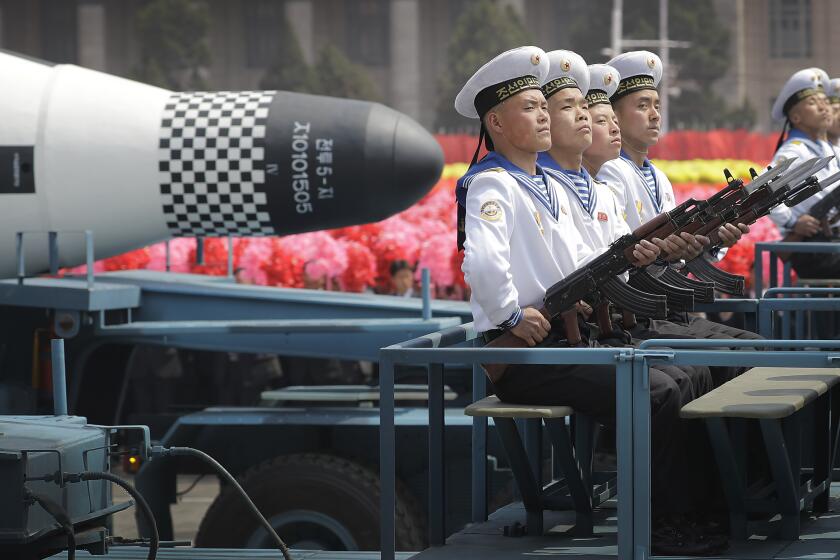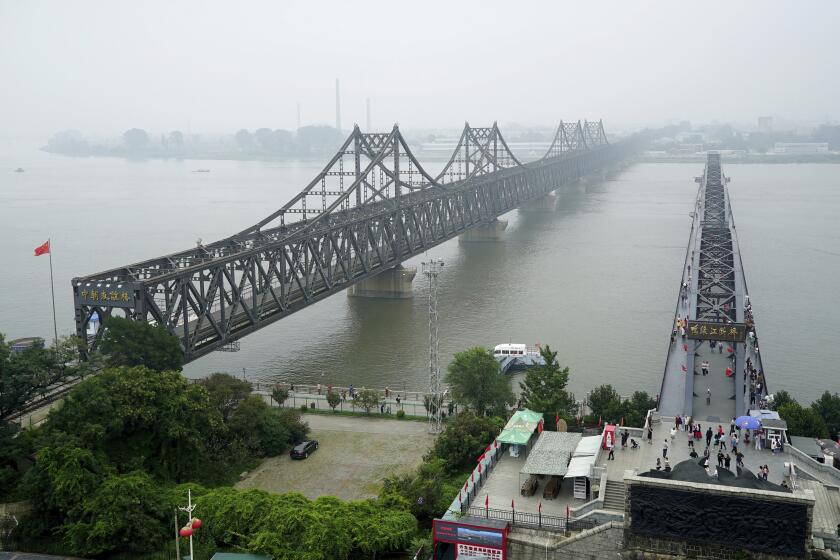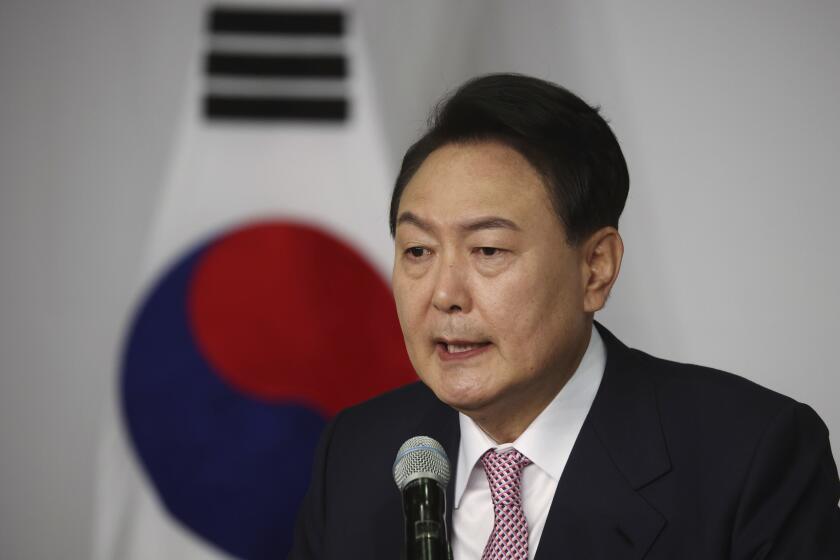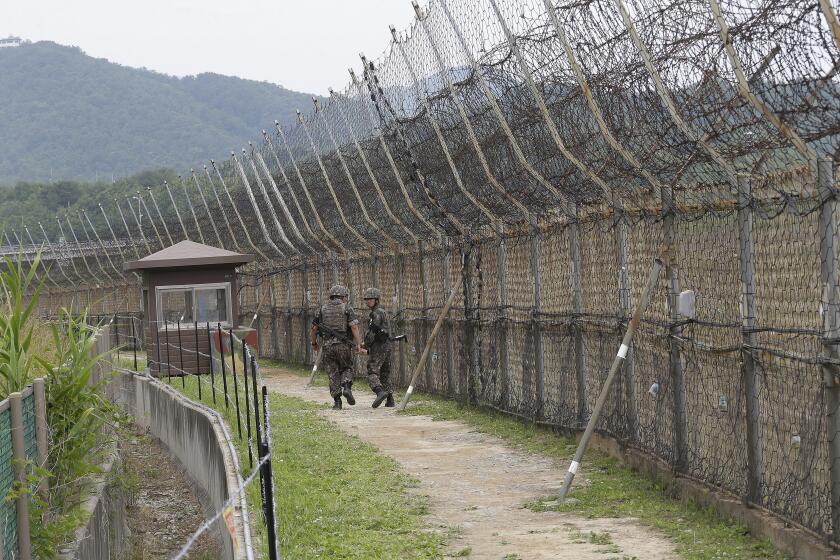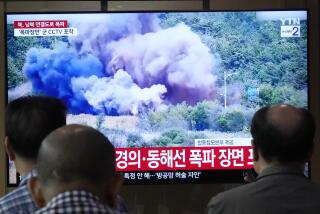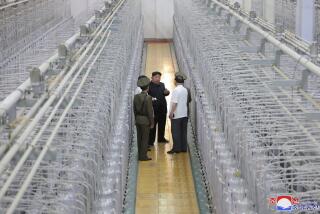Dialing up the pressure, North Korea tests long-range missile
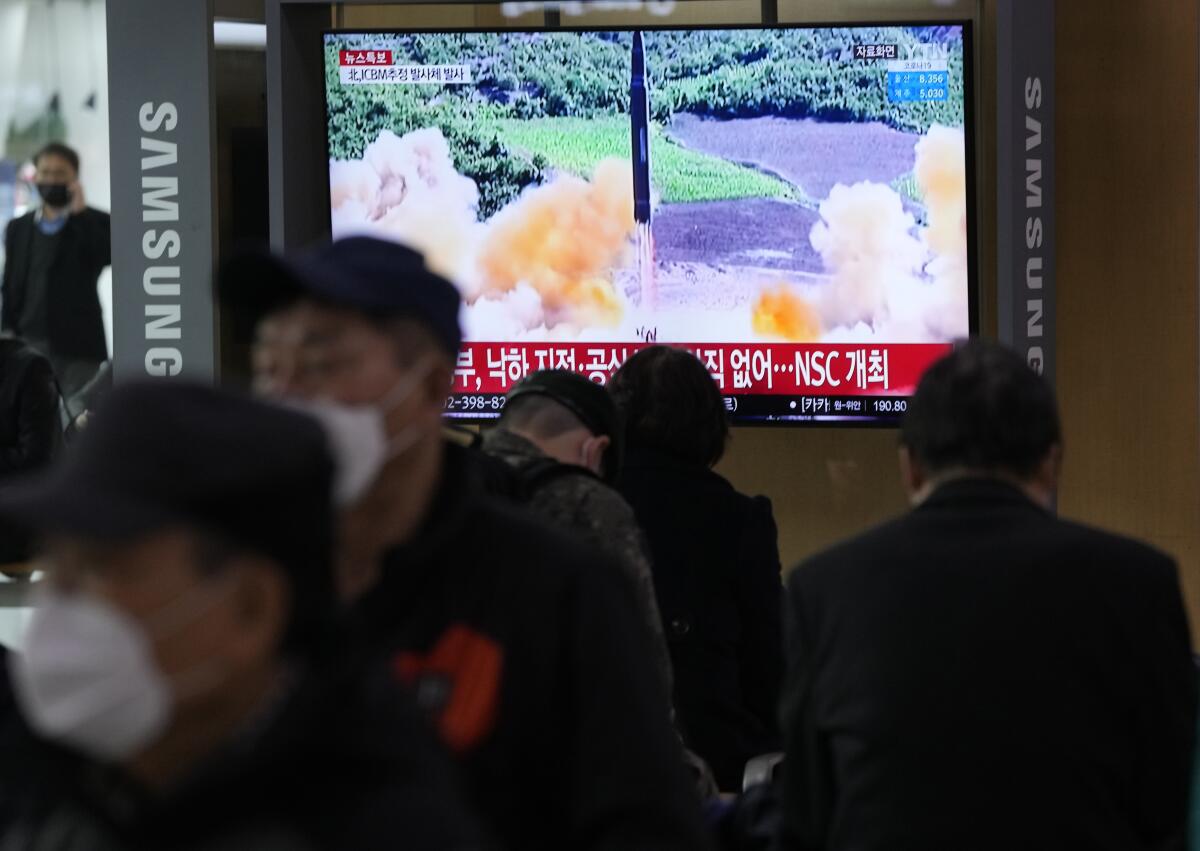
SEOUL — North Korea test-fired possibly its biggest intercontinental ballistic missile toward the sea Thursday, according to its neighbors, raising the ante in a pressure campaign aimed at forcing the United States and other rivals to accept it as a nuclear power and remove crippling sanctions.
The launch, which extended North Korea’s barrage of weapons tests this year, came after the U.S. and South Korean militaries said the country was preparing a flight of a new large ICBM first unveiled in October 2020.
South Korea’s military responded with live-fire drills of its own missiles launched from land, a fighter jet and a ship, underscoring a revival of tensions as nuclear negotiations remain frozen. It said it confirmed readiness to execute precision strikes against North Korea’s missile launch points as well as its command and support facilities.
Linda Thomas-Greenfield, the U.S. ambassador to the United Nations, told reporters the United States requested an open Security Council meeting on the launch and looks forward to having it Friday.
South Korea’s joint chiefs of staff and defense ministry said the possible “ICBM-level” missile fired from the Sunan area near the North’s capital, Pyongyang, traveled 670 miles while reaching a maximum altitude of more than 3,850 miles. The missile was apparently fired on a higher-than-usual angle to avoid reaching the territorial waters of Japan.
The White House plans to impose additional sanctions on North Korea for two recent ballistic missile tests that it says were efforts to test its ICBM capabilities.
Japan’s Deputy Defense Minister Makoto Oniki said flight details suggested a new type of ICBM.
“It’s an unforgivable recklessness. We resolutely condemn the act,” Japanese Prime Minister Fumio Kishida said after arriving in Belgium for the Group of 7 meetings.
The missile flew 71 minutes before possibly landing near Japanese territorial waters off the island of Hokkaido, said Tokyo’s Chief Cabinet Secretary Hirokazu Matsuno. Japan may search for debris inside its exclusive economic zone to analyze the North’s technology, he said.
Japan’s coast guard issued a warning to vessels in nearby waters, but there were no immediate reports of damage to boats or aircraft. A Japanese fisheries organization released a statement denouncing the launch as a “barbaric act” that puts fishermen’s lives and livelihoods at risk.
South Korean President Moon Jae-in called an emergency National Security Council meeting where he criticized North Korean leader Kim Jong Un for breaking a self-imposed moratorium on ICBM tests and posing a “serious threat” to the region and the broader international community.
North Korea is showing signs of easing its stringent border controls in hopes of boosting its ailing economy.
The U.S. strongly condemned the North’s launch, White House Press Secretary Jen Psaki said, calling it a “brazen violation” of United Nations Security Council resolutions that risks destabilizing the region’s security.
“The door has not closed on diplomacy, but Pyongyang must immediately cease its destabilizing actions. The United States will take all necessary measures to ensure the security of the American homeland and Republic of Korea and Japanese allies,” she said, referring to South Korea by its formal name.
In Brussels, President Biden and Japan’s Kishida discussed the North’s launch on the sidelines of the G-7 summit, stressing the need for diplomacy and agreeing to continue working together to hold Pyongyang accountable, the White House said.
Kim Dong-yub, a professor at Seoul’s University of North Korean Studies, said flight details suggest the missile could reach targets 9,320 miles away when fired on normal trajectory with a warhead weighing less than a ton. That would place the entire U.S. mainland within striking distance.
Following a highly provocative streak in nuclear explosive and ICBM tests in 2017, Kim unilaterally suspended such testing in 2018 ahead of his first meeting with then-President Trump.
North Korea’s resumption of nuclear brinksmanship reflects a determination to cement its status as a nuclear power and wrest badly needed economic concessions from Washington and others from a position of strength, analysts say.
Kim may also feel a need to trumpet his military accomplishments to his domestic audience as he grapples with a broken economy worsened by pandemic border closures.
The South Korean conservative president-elect is sure to be tested early on as North Korea rattles saber over nuclear weapons.
“Despite economic challenges and technical setbacks, the Kim regime is determined to advance its missile capabilities,” said Leif-Eric Easley, a professor of international studies at Seoul’s Ewha Womans University. “It would be a mistake for international policymakers to think the North Korean missile threat can be put on the back burner while the world deals with the pandemic and Russia’s invasion of Ukraine.”
The Biden administration’s passive handling of North Korea so far, while it focuses on Russia’s invasion of Ukraine and an intensifying rivalry with China, is allowing more room for the North to dial up its testing activity, some experts say. The administration’s actions on North Korea have so far been limited to largely symbolic sanctions imposed over its recent tests and offers of open-ended talks that were quickly turned down by Pyongyang’s leadership.
It was North Korea’s 12th round of weapons launches this year and came after it fired suspected artillery pieces into the sea Sunday.
The North has also tested a variety of new missiles, including a purported hypersonic weapon and its first launch since 2017 of an intermediate-range missile potentially capable of reaching Guam, a key U.S. military hub in the Pacific.
It also conducted two medium-range tests in recent weeks from Sunan, home to the country’s main airport, that the U.S. and South Korean militaries later assessed as involving components of the North’s largest ICBM. The allies then said the missile, which the North calls Hwasong-17, could be tested at full range soon.
Those tests followed another launch from Sunan last week that South Korea’s military assessed as a failure, saying the missile likely exploded shortly after liftoff.
While tens of thousands risk everything to flee North Korea, a few, having failed to adjust to the capitalist South, make a desperate journey back.
North Korea’s official media insisted that the two successful tests were aimed at developing cameras and other systems for a spy satellite. Analysts say the North is clearly attempting to simultaneously advance its ICBMs and acquire some level of space-based reconnaissance capability under the pretense of a space launch to reduce international backlash to those moves.
The launch may possibly come around a major political anniversary in April, the birthday of state founder Kim Il Sung, the late grandfather of Kim Jong Un.
The North’s previous ICBMs demonstrated potential range to reach the American homeland during three flight tests in 2017. Its development of the larger Hwasong-17, which was first revealed in a military parade in October 2020, possibly indicates an aim to arm it with multiple warheads to overwhelm missile defenses, experts say.
The North last flight-tested an ICBM in November 2017, when the Hwasong-15 flew about 600 miles for about 50 minutes at a maximum altitude of 2,400 miles. It wasn’t immediately clear whether the missile from the latest test was the Hwasong-17.
Denuclearization talks with the U.S. have been stalled since 2019, when the Americans rejected North Korea’s demand for a major release of crippling U.S.-led sanctions in exchange for a partial surrender of its nuclear capabilities.
Kim presided over a ruling Workers’ Party meeting Jan. 19, in which Politburo members issued a veiled threat to end his ICBM moratorium, citing U.S. hostility.
South Korea’s military has also detected signs that North Korea was possibly restoring some of the tunnels at its nuclear testing ground that were detonated in May 2018, weeks ahead of Kim’s first meeting with Trump.
More to Read
Sign up for Essential California
The most important California stories and recommendations in your inbox every morning.
You may occasionally receive promotional content from the Los Angeles Times.
